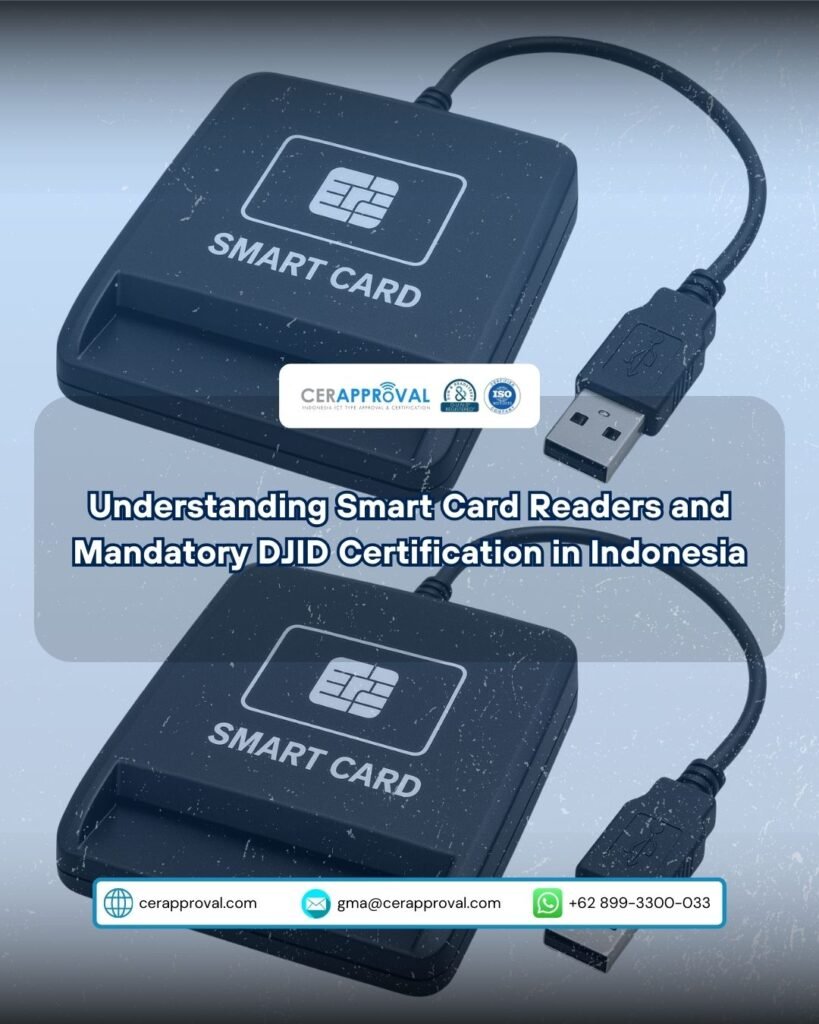
In today’s digital age, data security and electronic identification are becoming more crucial. One of the key devices widely used across industries is the smart card reader. This tool is designed to read and process information from smart cards, which are embedded with chips that store essential data.
What is a Smart Card Reader?
A smart card reader is a hardware device that reads data from smart cards. These cards are commonly applied in banking systems, digital identification, public transportation, and healthcare services.
Functions of Smart Card Reader
✅ Data Security: Provides identity authentication for high-security systems.
✅ Financial Transactions: Supports chip-based electronic payments.
✅ System Access: Grants access rights to devices or applications.
✅ Digital Identity: Used in e-ID cards, driver’s licenses, or health insurance cards.
How to Use a Smart Card Reader
- Install Driver/Software: Connect the device to a computer or system and install necessary drivers.
- Connect to the System: Use USB or wireless connectivity (for contactless versions).
- Insert or Tap the Card: Depending on the reader type, insert the card or tap it on the reader.
- Verify Data: The system processes the information for authentication or transaction purposes.
Types of Smart Card Reader
Contact Smart Card Reader
➡️ Reads cards by inserting them directly into the reader slot.
➡️ The chip on the card must touch the metal connector inside the reader.
➡️ Commonly used in ATMs, EDC (Electronic Data Capture) machines, and SIM card readers.
➡️ Advantages: cheaper, stable connection.
➡️ Disadvantages: cards and readers wear out faster due to physical contact.
Contactless Smart Card Reader
➡️ Uses RFID/NFC technology to read cards.
➡️ The card simply needs to be tapped or held close to the reader.
➡️ Widely used for e-money, transportation cards, and building access.
➡️ Adantages: faster, no physical contact required.
➡️ Disadvantages: higher device costs.
Dual Interface Smart Reader
➡️ Supports two modes: contact and contactless.
➡️ Can read smart cards that have both a chip and an RFID antenna.
Hybrid Smart Card Reader
➡️ Capable of reading two separate types of cards: contact cards and contactless cards, but not on a single chip.
➡️ This differs from the dual interface, which reads one card with two technologies.
Smart Card Reader Regulation in Indonesia
This device falls under the category of communication, specifically contactless communication that relies on radio frequency-based RFID and NFC technology. Therefore, smart card readers must be certified by the DJID (Directorate General of Digital Infrastructure) before they can be legally marketed or used in Indonesia.
Currently, the use of RFID and NFC in devices is regulated by KEPMEN Kominfo Number 260 of 2024, which specifies the frequency bands and permitted transmission power limits.
| No | Radio Frequency Band | Transmit Power (RF Output Power)/Field Strength | Transmitter Spurious Emission | Test Method |
| 1 | 16-150 kHz | ≤ 66 dBμA/m at a distance of 10 meters | EN 300 330 | EN 300 330 |
| 2 | 6765-6795 kHz | ≤ 42 dBμA/m at a distance of 10 meters | EN 300 330 | EN 300 330 |
| 3 | 7400-8800 kHz | ≤9 dBμA/m at a distance of 10 meters | EN 300 330 | EN 300 330 |
| 4 | 13,553-13,567 MHz | ≤ 20 dBm ERP or ≤ 94 dBµV/m a distance of 10 meters | EN 302 291, EN 300 330 | EN 302 291, EN 300 330 |
| 5 | 433-434,79 MHz | ≤ 20 dBm ERP | EN 300 220 | EN 300 220 |
| 6 | 920-923 MHz | ≤ 26,02 dBm EIRP | Standar 300 220, Standar 302 208 | Standar 300 220, Standar 302 208 |
| 7 | 2400-2483,5 MHz | ≤ 20 dBm EIRP | EN 300 440 | EN 300 440 |
| No | Radio Frequency Band | Transmit Power (RF Output Power)/Field Strength | Transmitter Spurious Emission | Test Method |
| 1 | 13,553-13,567 MHz | ≤ 20 dBm ERP atau ≤ 94 dBµV/m at a distance of 10 meters | EN 302 291 atau EN 300 330 | EN 302 291 atau EN 300 330 |
If both of the above technical standards are met, it ensures that smart card reader devices can be used legally and are compatible in the Indonesian market. If you are an importer, distributor, or manufacturer of devices such as smart card readers, be sure to obtain DJID certification before marketing your products. This will speed up the process and ensure that all documents are complete.
As a certification body, Cerapproval is ready to help companies ensure that smart card reader devices meet international standards, so that they are safe and suitable for marketing.
